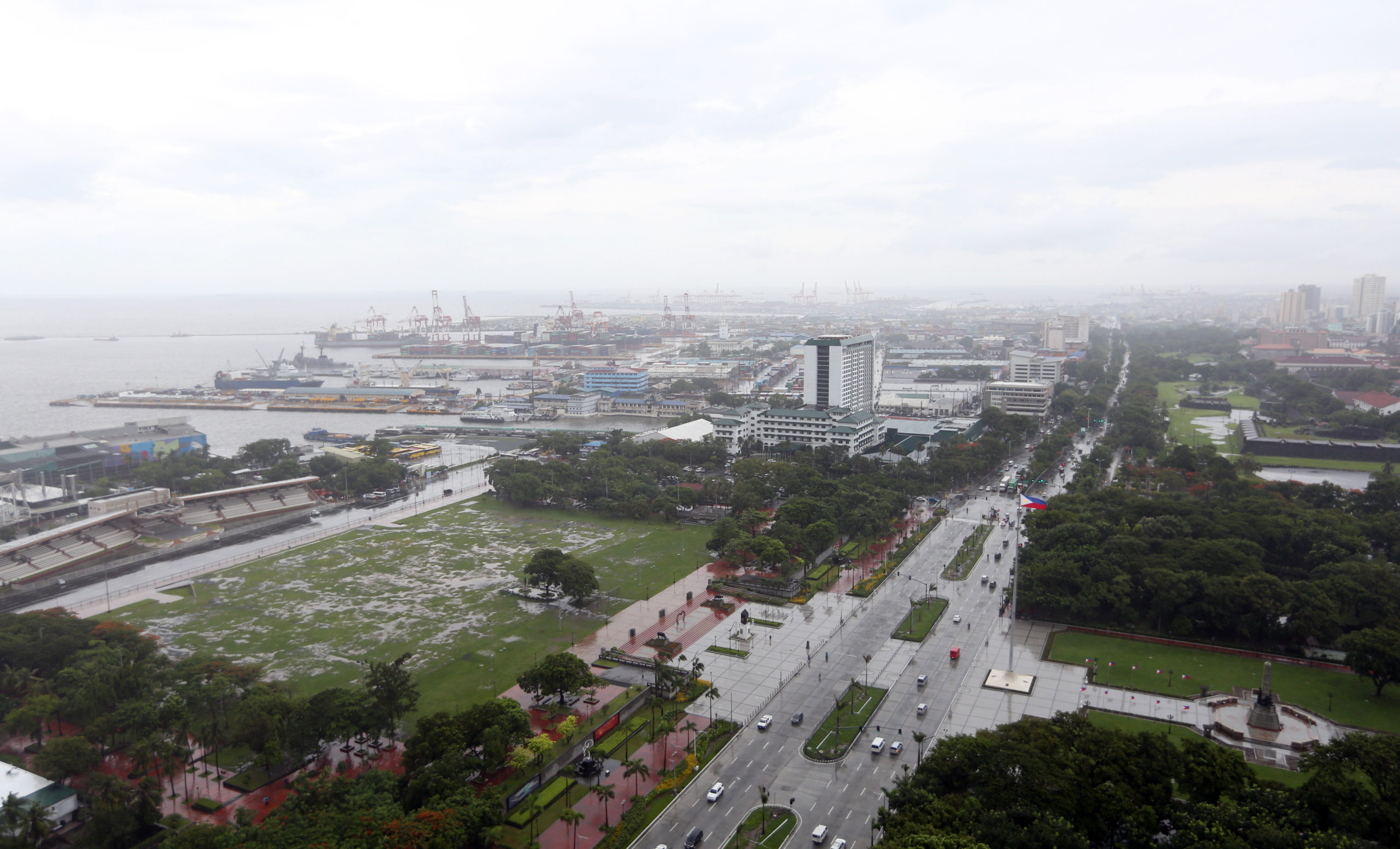As Filipinos’ needs change amid COVID-19, so will spaces

PUBLIC SPACES FOR PUBLIC GOOD Rizal Park is one of the few open spaces available to quarantined Filipinos who want to get out of their homes. Public open spaces are considered an essential part of a city and a civic instrument in keeping community activities breathing despite a particularly challenging global crisis. —INQUIRER FILE PHOTO
The protracted COVID-19 pandemic has changed the way most Filipinos think about space, be it at work or at home.
Appreciation and desire for open spaces have certainly increased, not just because well-ventilated spaces have been found to significantly reduce the risk of contracting the disease, but also because these offer a relief from the stress of being restricted at home.
Then there’s the work-from-home scheme that is seen staying on in some form even after the COVID-19 crisis is over. This may in turn lead to the return of the Small Office-Home Office trend that was popular just a few years back. Also, as people were working and learning from home en masse, many families discovered that their homes were not set up for working and learning activities.
As a result, family members jostled for limited space and facilities. This may drive a new trend of buyers and upgraders looking for larger apartments. For others, technology may offer solutions to overcome space limitations.
Other than working from home, a new trend may be for larger organizations to move away from a centralized workplace to having two or more district offices for redundancy and social distancing.
The retail sector will also have to adapt.
With the phenomenal growth of online sales, buyers will need another reason to go to the physical stores other than just to buy something. Thus, physical stores may have to level up the retail experience beyond the essentials of providing a wide range of products at competitive prices.
Marketing experts can latch on to these trends as they push sales of real estate developments that have been likewise hit by the COVID-19 pandemic and now evolving to meet changing needs.
It used to be that development was associated with crowds, high footfall, social vibrancy, and where appropriate, mixed with a diverse range of services that bring synergy and convenience.
With the need for social distancing, these norms have been overturned as foot traffic in public places has to be regulated and smart solutions to manage traffic may have to be implemented for the health and safety of visitors.
How will public spaces adjust with the need for decentralization?
The Urban Planning & Design team from CPG Consultants shared their views on how COVID-19 will impact the built environment.
Human beings are social by nature, and the need to meet each other in conducive public places will not go away.
As a result, work or leisure premises may operate over an extended period to avoid high peaks and even out the visitors. This may usher in a new era of high-density development with low- or moderate- density activities, augmented with technology and online, virtual participation.
Designing community spaces in the ‘new normal’
During the COVID-19 pandemic, various events around the world have shown that public spaces are integral to the community’s resilience. The pandemic has emphasized public spaces as a necessity in everyday urban life.
Amid the lockdown and social distancing regulations, there has been an increasing demand for public spaces, which is a finite resource in many cities. This may prompt cities to reevaluate existing spaces or start with new urban development frontiers.
To contain the spread of the pandemic, communities are encouraged to use the public spaces near their neighborhoods.
Post pandemic, planning and design of public spaces have to be carefully evaluated to allow easy access while ensuring safety.
Practices worldwide have focused on the introduction of private spaces within public spaces.
Also, efforts have been taken to introduce activities in public spaces that keep the people moving rather than lingering in public spaces to avoid crowding.
In the Philippines, there is a need to design a community that is self-sustaining, the consultants said.
Especially when it comes to essential needs; spaces must be accessible as much as possible, such as cafes, restaurants and grocery stores just below residences or closer to homes easing the demands of delivery services. Rodeo Cabillan, principal designer of CPG’s Urban Planning team, shared that in cities like Singapore, there has been a surge of usage of public open spaces, especially neighborhood parks.
Either in the morning or afternoon, many people are seen using these open spaces as a place to exercise (walking, jogging, cycling), or just to get some fresh air outside of their homes. Singapore, where most of the residents live in apartments, needs these open spaces to provide its people a refuge, a sanctuary where they can enjoy outside of their homes.
Private spaces on public spaces
Public open spaces are an essential part of the city, CPG said, and a civic instrument in keeping community activities breathing despite a particularly challenging global crisis.
One of the characteristics of these open spaces is the presence of “natural private spaces on public spaces,” where a place can accommodate activities best suited for people, ranging from individuals to smaller groups. These types of “private spaces on public spaces” can offer spatial separation, privacy and organic segregation, they said.
COVID-19 brought about new norms, and new norms in the society can be adapted to coexist with COVID-19 or a pandemic by driving innovation and technology toward transformation that was not possible before.














